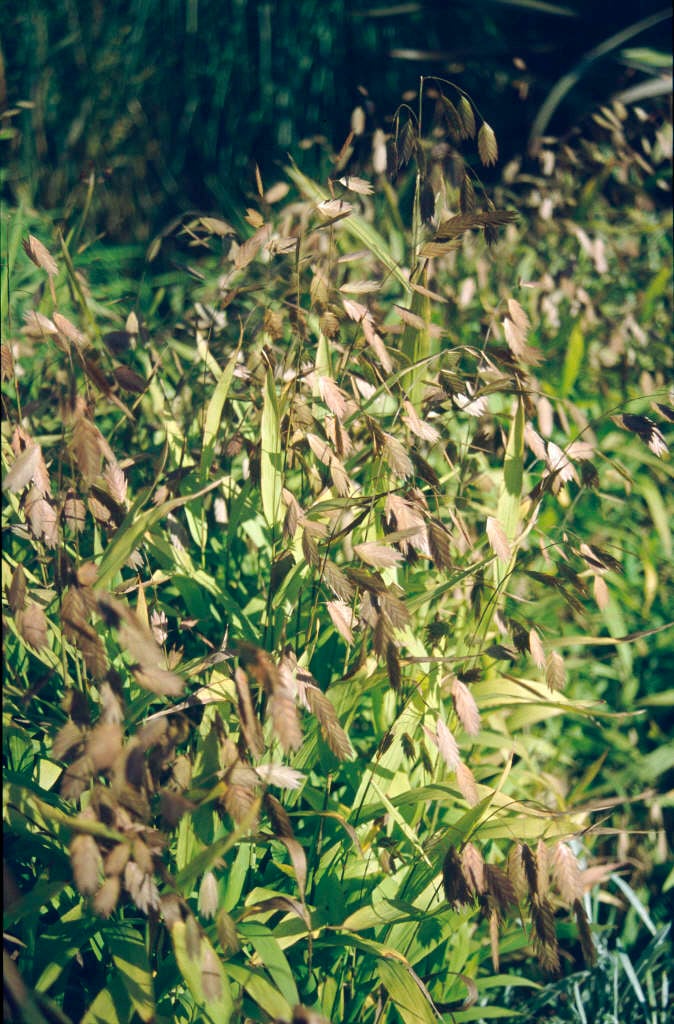Chasmanthium latifolium
North America wild oats
A robust spreading deciduous grass with narrowly lance-shaped leaves and arching stems bearing pendent, flattened spikelets 1cm in length, in late summer
Synonyms
Uniola latifolia
Buy this plant
Size
Ultimate height
0.5–1 metresTime to ultimate height
2–5 yearsUltimate spread
0.1–0.5 metresGrowing conditions
Moisture
Moist but well–drained, Well–drainedpH
Acid, Alkaline, NeutralColour & scent
| Stem | Flower | Foliage | Fruit | |
| Spring | Green | |||
|---|---|---|---|---|
| Summer | Green | Green | ||
| Autumn | Brown | Yellow | ||
| Winter |
Position
- Full sun
- Partial shade
Aspect
South–facing or North–facing or West–facing or East–facing
Exposure
Exposed or Sheltered Hardiness
H7Botanical details
- Family
- Poaceae
- Native to GB / Ireland
- No
- Foliage
- Deciduous
- Habit
- Tufted
- Genus
Chasmanthium are robust deciduous perennial grasses with broadly linear leaves and arching panicles of large, flattened flowering spikelets in late summer
- Name status
Correct
- Plant range
- E US, N Mexico
How to grow
Cultivation
Easy to grow in most moist, well-drained fertile soils
Propagation
Propagate by seed sown in pots in a cold frame in spring or by division in early summer
Suggested planting locations and garden types
- Prairie planting
- Cottage and informal garden
- Low Maintenance
- Cut flowers
- Flower borders and beds
Pruning
Cut back in late winter
Pests
Generally pest-free
Diseases
Generally disease-free
Get involved
The Royal Horticultural Society is the UK’s leading gardening charity. We aim to enrich everyone’s life through plants, and make the UK a greener and more beautiful place.